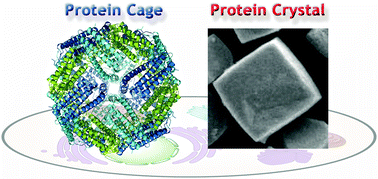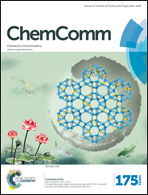Design of a confined environment using protein cages and crystals for the development of biohybrid materials
Abstract
There is growing interest in the design of protein assemblies for use in materials science and bionanotechnology. Protein assemblies, such as cages and crystalline protein structures, provide confined chemical environments that allow immobilization of metal complexes, nanomaterials, and proteins by metal coordination, assembly/disassembly reactions, genetic manipulation and crystallization methods. Protein assembly composites can be used to prepare hybrid materials with catalytic, magnetic and optical properties for cellular applications due to their high stability, solubility and biocompatibility. In this feature article, we focus on the recent development of ferritin as the most promising molecular template protein cage and in vivo and in vitro engineering of protein crystals as solid protein materials with functional properties.


 Please wait while we load your content...
Please wait while we load your content...